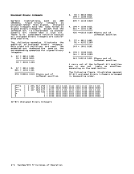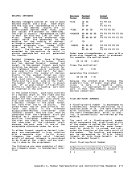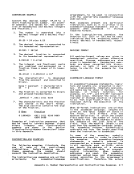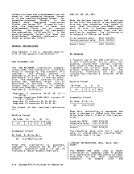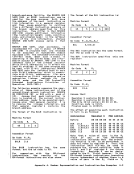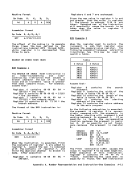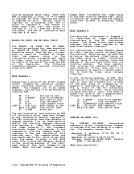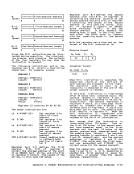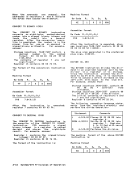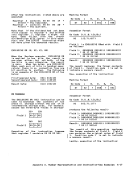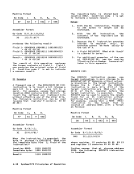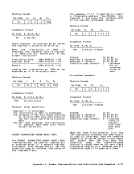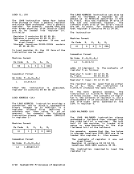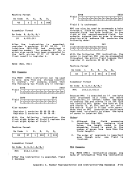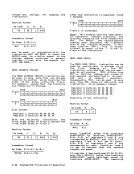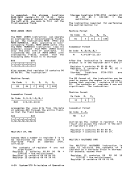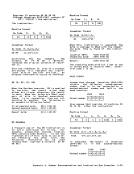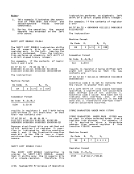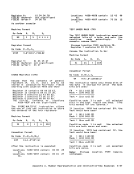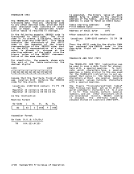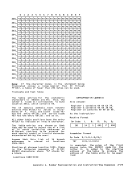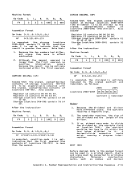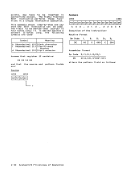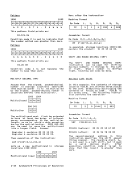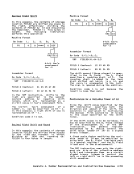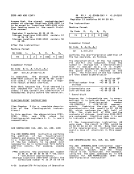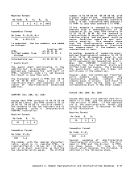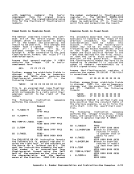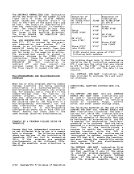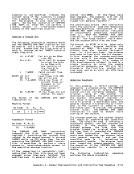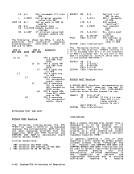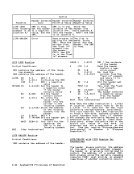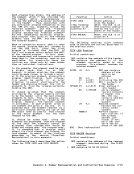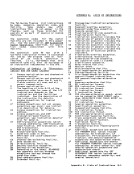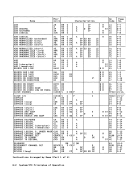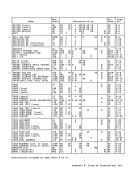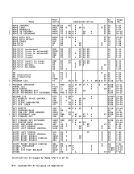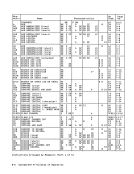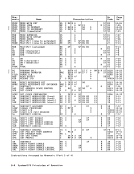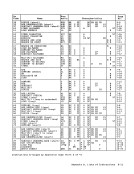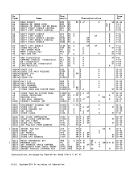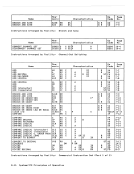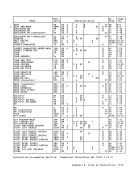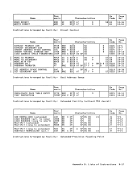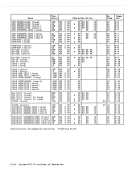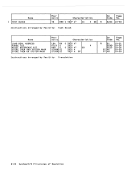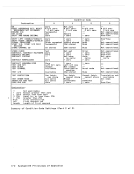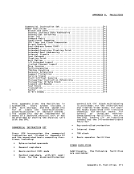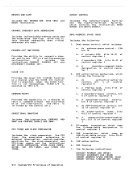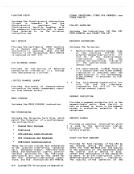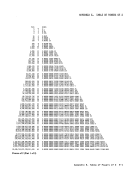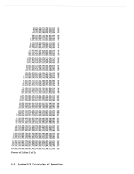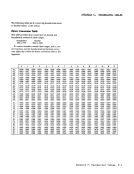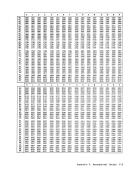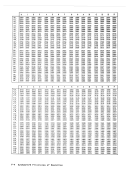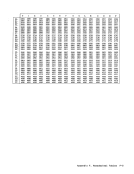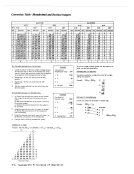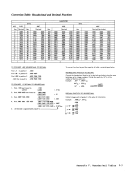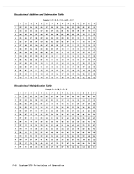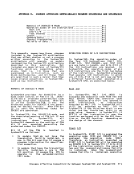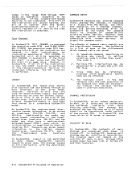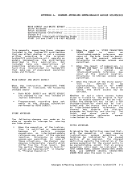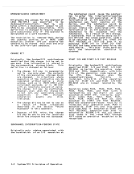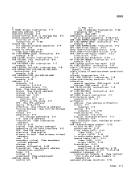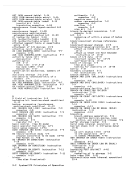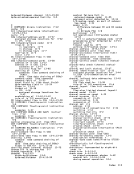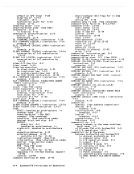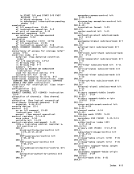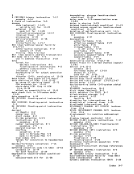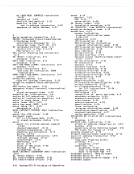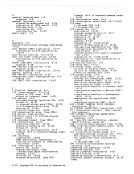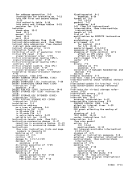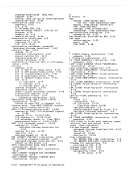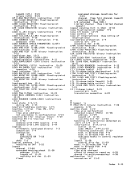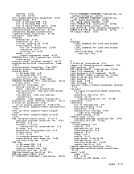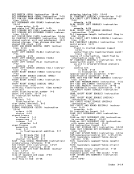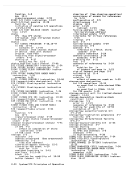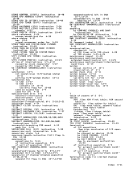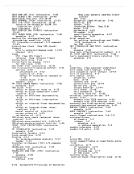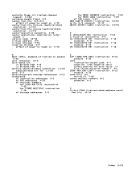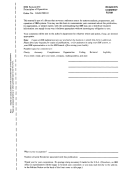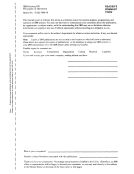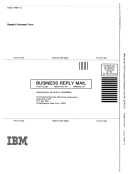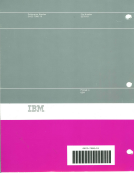A I Channel A H
Subchannel
o +++
A Available
I Interruption pendingI* = Interruption pending for a device other than the one
addressedIn = Interruption pending for the addressed device W Working W* = Working with a device other than the one addressed wn = Working with the addressed device
H Hot operational* CSW stored
+ In theW*AX, W*I*X, and W*W*X states, a condition code 0 or
2 may be set, depending on the channel.
++ In theW*Inx, WtwnX, (with the CSW stored)
channel.
andwnxx states, a condition
or 2 may be set, depending
code 1
on the
+++ In theW*HX state, a condition code 2 or 3 may be set, depending on the channel.
Hote: Underscored codes pertain to situations that can occur
only on the multiplexer channel.Condition Codes Set by CLEAR I/O Programming Hotes
1.Since some channels cause condition
code 2 to be set when the instruc
tionis received and the channel is
working, it may be useful to issue
a halt instruction and thenCLEAR I/O to the desired address. Using
HALTDEVICE will ensure that condi
tion code 2is received on the CLEAR I/O only when the channel is
working witha device other than
the one addressed. Using HALTI/O will ensure that the current work ing state, if any, is terminated
without regard for the address.
2. Because of the inability ofCLEAR I/O to terminate operations on some
channels when in the working state,
the instruction is nota suitable
substitute for HALTI/O or HALT DEVICE. 3. The combination of HALT DEVICE followed by CLEAR I/O can be used
to clear out all activity on a
channel by executing the two
instructions for all device
addresses on the channel.
4. The subchannel is said to be work
ing with a device from the time
condition code0 is set for SIO or SIOF addressed to the device until
the subchannel becomes
interruption-pending because of the
ending at the subchannel of theI/O operation or chain of operations.
Suspension of the channel-program
execution does not cause the ending
at the subchannel of anI/O opera
tion or chain of operations.
Therefore, the subchannel is said
to be working even while the
channel-program execution is
suspended.
HALTDEVICE HDV [5]
'9E01'
o 1620 31
The currentI/O operation at the
addressedI/O device is terminated. The
subsequent state of the subchannel
depends on the type of channel.
Bits 8-14 of the instruction are
ignored. Bits 16-31 of the second
operand address identify the channel,
the subchannel, and theI/O device to
which the instruction applies.
Either a HALTDEVICE (HDV) or a HALT I/O (HIO) function is performed, depending
on the channel. TheHIO function is
performed when the HDV function is not
implemented by the channel.Chapter 13. Input/Output Operations 13-19
Subchannel
o +++
A Available
I Interruption pending
addressed
H Hot operational
+ In the
2 may be set, depending on the channel.
++ In the
channel.
and
or 2 may be set, depending
code 1
on the
+++ In the
Hote: Underscored codes pertain to situations that can occur
only on the multiplexer channel.
1.
code 2 to be set when the instruc
tion
working, it may be useful to issue
a halt instruction and then
HALT
tion code 2
working with
the one addressed. Using HALT
without regard for the address.
2. Because of the inability of
channels when in the working state,
the instruction is not
substitute for HALT
to clear out all activity on a
channel by executing the two
instructions for all device
addresses on the channel.
4. The subchannel is said to be work
ing with a device from the time
condition code
the subchannel becomes
interruption-pending because of the
ending at the subchannel of the
Suspension of the channel-program
execution does not cause the ending
at the subchannel of an
tion or chain of operations.
Therefore, the subchannel is said
to be working even while the
channel-program execution is
suspended.
HALT
'9E01'
o 16
The current
addressed
subsequent state of the subchannel
depends on the type of channel.
Bits 8-14 of the instruction are
ignored. Bits 16-31 of the second
operand address identify the channel,
the subchannel, and the
which the instruction applies.
Either a HALT
on the channel. The
performed when the HDV function is not
implemented by the channel.
























































































































































































































































































































































































































































